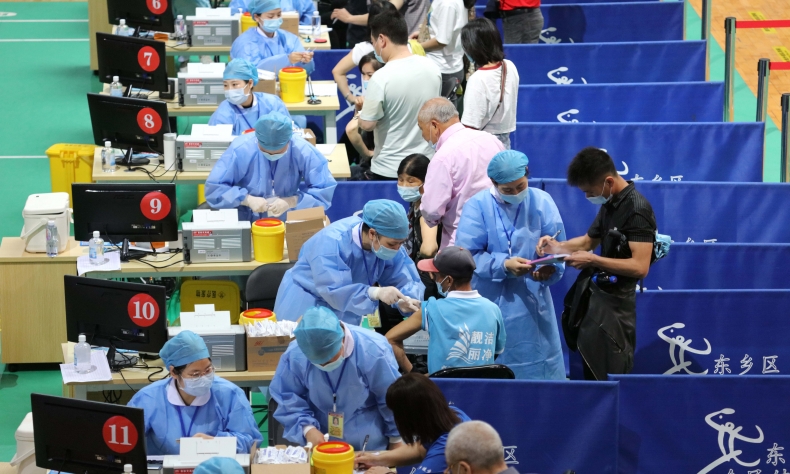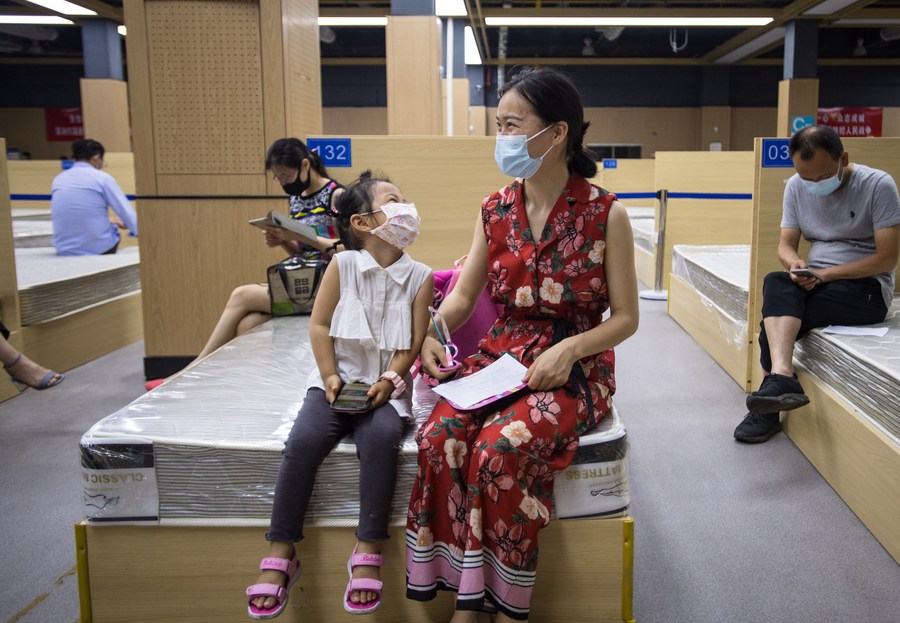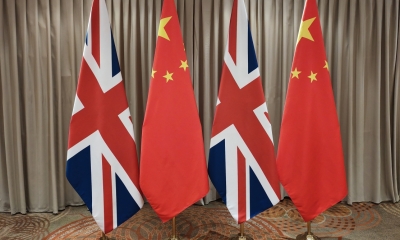One Billion and Counting: The Secret to China’s Successful Vaccine Rollout

An effective top-down healthcare system, coupled with a robust pharmaceutical industry and a population that has embraced science rather than hearsay over vaccines has seen China hit 1 billion vaccine doses in record time.
China is often described as a country of superlatives, from its enormous population to its colossus economic output. But even by the country’s extraordinary standards, last Saturday’s COVID vaccine statistics took that term to a whole new level.
China has now administered more than a billion vaccines, reaching 1.01 billion last Saturday. To put that number into perspective, it has administered almost 40 percent of all vaccines administered globally, and more than three times the number administered by the next highest country, the United States.
The secret to this phenomenal rollout – which some international news outlets described as a “failure” just three months ago – can be accredited to a top-down healthcare system that has consistently delivered, a robust pharmaceutical industry that has kept up with demand, and a population that has embraced science rather than hearsay when it comes to the effectiveness of vaccines.
Slow start? Not exactly
That isn’t to say there have not been bumps in the road. Despite having approved its first COVID-19 vaccine in December 2020, the number of doses administered between then and the end of February could be best described as nominal.
Fifty-two million were administered, approximately 3.56 doses per 100 people, over that 3-month period, while in contrast, the US had administered nearly 25 million more, administering doses at roughly 23 doses per 100 people.
Some put this down to vaccine hesitancy, with surveys taken in Zhejiang and Shanghai showing significant numbers of people disinterested in taking the vaccine, although not as a result of people having hesitancy in the vaccine’s science.
Rather, it was a question of the vaccine’s necessity. While cases in other parts of the world were continuing to spiral out of control, China was recording close to zero daily cases, and had only recorded one COVID-related death since May 2020. People had just celebrated a relatively COVID-free Spring Festival – China’s most widely celebrated festival – and lives had pretty much returned to normal. People had confidence in the government’s containment methods, with the country’s strictly controlled borders a seemingly impenetrable barrier to the rest of the world’s new COVID variants.
Rollout accelerates
A small outbreak in April however challenged that narrative. In the southwestern city of Ruili in Yunnan province, which shares a border with Myanmar, cases began to mount.
Officials attributed the outbreak to an illegal crossing from Myanmar into the Chinese province, and the outbreak sparked mass testing and lockdowns in some of the province’s cities. The news was a wake-up call for both officials and the general public, offering a stark reminder that no one is safe until everyone is safe from the virus.
From that moment on, vaccine production went into overdrive. Chinese pharma companies Sinovac and Sinopharm, both who’d received permission for their COVID jabs, increased the number of their production lines, resulting in daily produced vaccine doses jumping from 1.5 million doses a day in February to 5 million a day in April.
After that, China’s vaccine numbers just kept accelerating. By April 21, 100 million doses had been administered, and then just 14-days later, another 100 million doses were administered. For the next month, nearly 100 million doses were administered every 6-days, with the number of doses given to people increasing to a peak of 23 million a day by June. Even the US’ rollout, considered world-beating by many, was posting only a fraction of those numbers, even when at full tilt.
Key to these high numbers was the availability in which people could get their shots. Mobile vaccine centres were set up in almost every available public space, with parks, shopping malls, and even train stations utilized. Equipped with an army of vaccine volunteers, these workers were stationed around these spots, quizzing people as they got off trains or left shops, and guiding them to get their free vaccines.

Herd immunity in sight
The acceleration in China’s vaccine rollout means the country is likely to smash past its target of fully vaccinating 40 percent of the country – 560 million people – by July, making the possibility of achieving herd immunity by the end of the year a real prospect.
China’s biggest cities are now well on their way to being fully vaccinated, with megacities like Beijing having administered fourth-fifths of its adult population with at least one dose, meaning attention can now turn to ensuring those living in its rural communities are vaccinated.
Spread over vast and sometimes difficult terrain, China’s 509 million rural dwellers, who make up 36 percent of the country’s population, represent a different challenge as the country looks to fully inoculate its entire population.
Ensuring vaccine production remains steady is essential to fulfill this, and pharma companies have stressed they have the capacity to meet this challenge. Feng Duojia, president of the China Vaccine Industry Association projects China will be able to produce 5 billion doses by 2022.
This increase will be music to many countries’ ears as well, given 50 countries have already bought Chinese vaccines – a number that is likely to increase since two of its vaccines were given approval by the World Health Organisation in May. By June 25, China has already sent more than 400 million doses abroad, as well as donations to more than 90 countries, making it an important clog in the world’s battle to get every person vaccinated.
No let up
The Chinese authorities will know there can be no let-up in its vaccination roll out, despite huge swaths of the public now vaccinated.
New variants of the virus continue to be discovered, with the latest Delta variant threatening to undo the good work vaccines have already done in a number of countries, and is something that will worry authorities given how cases have risen in those places.
But China very rarely sets targets it cannot meet, and with a robust vaccine production capacity already in place, as well as a population less skeptical to taking the vaccine, there are hopes that the next billion doses will be administered even quicker, and bring the country one step closer to riding itself of COVID-19 for good.
 Facebook
Facebook
 Twitter
Twitter
 Linkedin
Linkedin
 Google +
Google +







